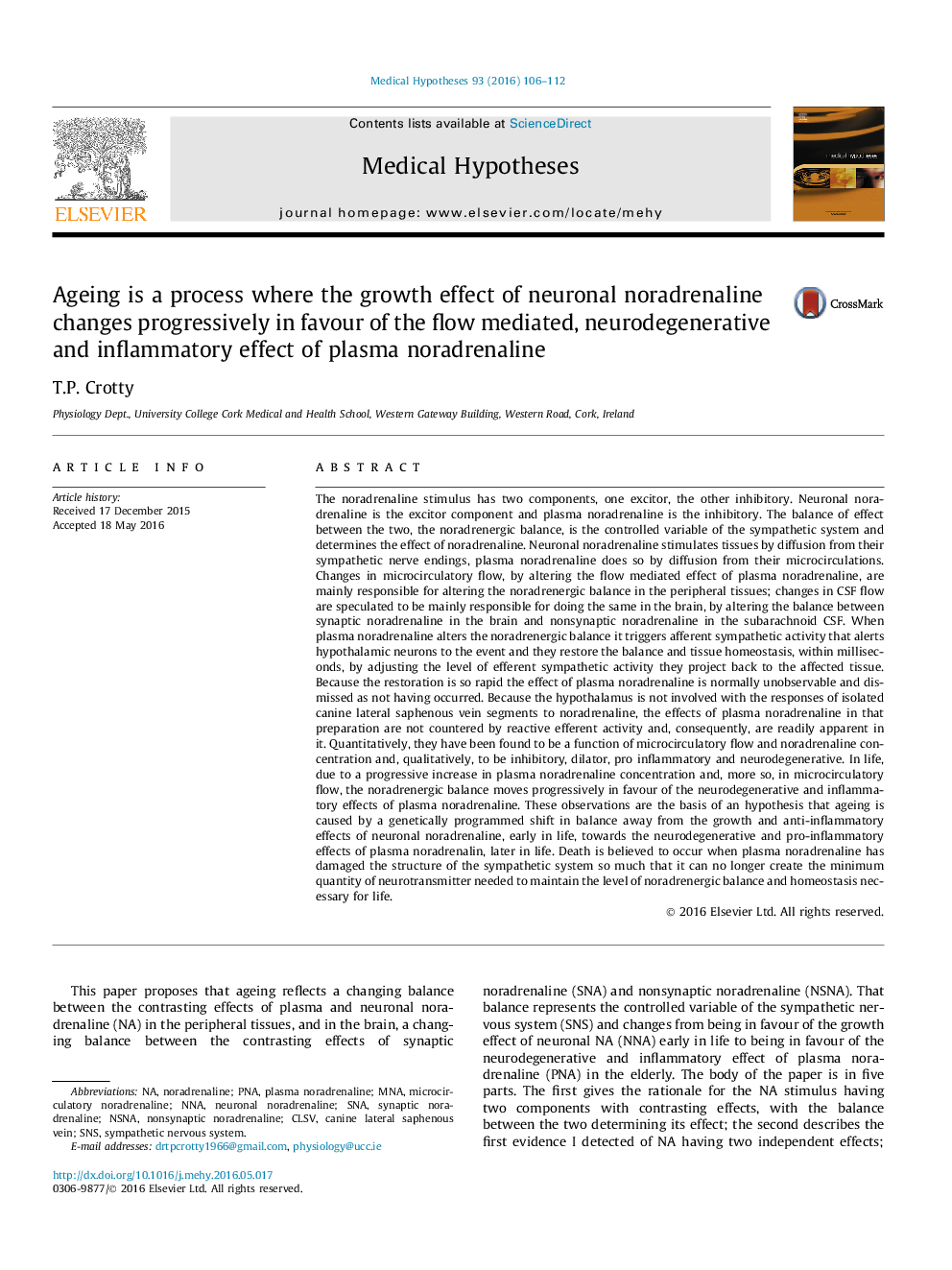| کد مقاله | کد نشریه | سال انتشار | مقاله انگلیسی | نسخه تمام متن |
|---|---|---|---|---|
| 5810448 | 1556552 | 2016 | 7 صفحه PDF | دانلود رایگان |
The noradrenaline stimulus has two components, one excitor, the other inhibitory. Neuronal noradrenaline is the excitor component and plasma noradrenaline is the inhibitory. The balance of effect between the two, the noradrenergic balance, is the controlled variable of the sympathetic system and determines the effect of noradrenaline. Neuronal noradrenaline stimulates tissues by diffusion from their sympathetic nerve endings, plasma noradrenaline does so by diffusion from their microcirculations. Changes in microcirculatory flow, by altering the flow mediated effect of plasma noradrenaline, are mainly responsible for altering the noradrenergic balance in the peripheral tissues; changes in CSF flow are speculated to be mainly responsible for doing the same in the brain, by altering the balance between synaptic noradrenaline in the brain and nonsynaptic noradrenaline in the subarachnoid CSF. When plasma noradrenaline alters the noradrenergic balance it triggers afferent sympathetic activity that alerts hypothalamic neurons to the event and they restore the balance and tissue homeostasis, within milliseconds, by adjusting the level of efferent sympathetic activity they project back to the affected tissue. Because the restoration is so rapid the effect of plasma noradrenaline is normally unobservable and dismissed as not having occurred. Because the hypothalamus is not involved with the responses of isolated canine lateral saphenous vein segments to noradrenaline, the effects of plasma noradrenaline in that preparation are not countered by reactive efferent activity and, consequently, are readily apparent in it. Quantitatively, they have been found to be a function of microcirculatory flow and noradrenaline concentration and, qualitatively, to be inhibitory, dilator, pro inflammatory and neurodegenerative. In life, due to a progressive increase in plasma noradrenaline concentration and, more so, in microcirculatory flow, the noradrenergic balance moves progressively in favour of the neurodegenerative and inflammatory effects of plasma noradrenaline. These observations are the basis of an hypothesis that ageing is caused by a genetically programmed shift in balance away from the growth and anti-inflammatory effects of neuronal noradrenaline, early in life, towards the neurodegenerative and pro-inflammatory effects of plasma noradrenalin, later in life. Death is believed to occur when plasma noradrenaline has damaged the structure of the sympathetic system so much that it can no longer create the minimum quantity of neurotransmitter needed to maintain the level of noradrenergic balance and homeostasis necessary for life.
Journal: Medical Hypotheses - Volume 93, August 2016, Pages 106-112
